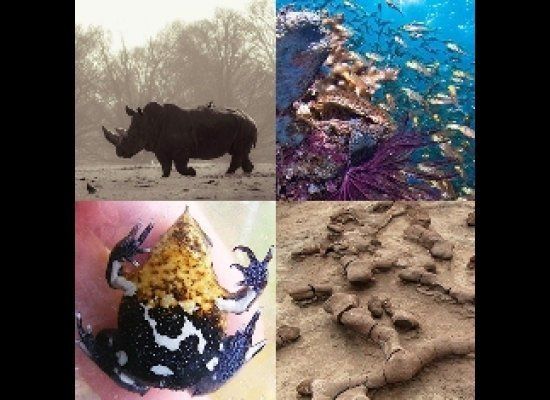There's a growing consensus among scientists that the earth is in the midst of its sixth mass extinction. They have in hand voluminous data demonstrating the changing conditions putting 20,000 species of animals and plants around the globe at high risk for disappearing from the wild. From the fossil record we know that such a rapid loss of so many species has previously occurred only five times in the past 540 million years. The last mass extinction, around 65 million years ago, removed dinosaurs from the face of the earth.
Predictions about the impact of man-made climate change on these 20,000 vulnerable species are based on a set of measurable changes to the earth's atmosphere, soil, polar ice sheets, and oceans, and a calculation of how these ongoing changes will affect the survival of each bird, plant, mammal, amphibian, or other organism living in a particular habitat -- based on all that we know about these species. The results of these calculations and models -- once they arrive in the popular media -- are increasingly positioned as scorecards, offering nature's "winners" and "losers."
Many people may already view this drastic loss in global biodiversity as an inevitability; a set of changes that don't threaten humans nearly as much as, say, extreme weather events. In reality, we are members of an interdependent global ecosystem. Frighteningly, the rise of certain climate change winners, for example, the disease carrying Asian Tiger Mosquito, or several species of pollen spewing ragweed supercharged by increased levels of CO2, present direct threats to human health. Other impacts will hit us indirectly, such as the evolution of your morning cup of coffee from mere habit to luxury item with the threatened extinction of the coffea arabica plant, which supplies 70 percent of the world's coffee crop.
One way to more realistically assess the significance of this mass extinction already underway is to understand how climate scientists "know what they know." A newly curated PLOS Collection titled "The Ecological Impacts of Climate Change" contains 16 research studies by teams of biologists, ecologists, and working in a race with extinction to demonstrate exactly what is happening to different species around the globe. Among the research papers in this collection is a vulnerability assessment of a vast array of the world's birds, amphibians, coral, and plants. Other papers focus on one or a handful of species, such as the Western Grebe, the East African coffee plant, tree frogs, and penguins.
More than winners and losers, this research explains the "why" behind the fate of those species on either end of the vulnerability scale. Ten such species are pictured on the slideshow below, with details drawn from research papers in this collection and PLOS BLOGS Network science writers.
This slide show and introduction is by PLOS BLOGS Community Manager Victoria Costello.

